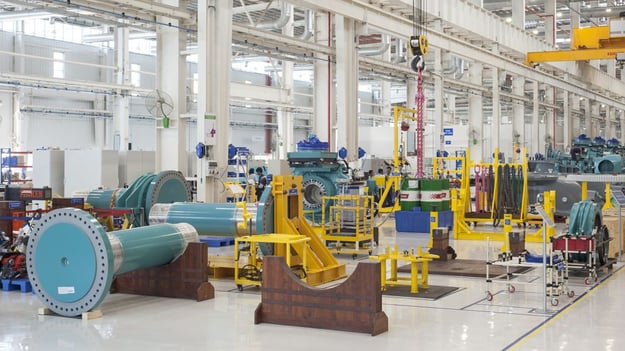In many manufacturing sectors today it’s practically required to maintain multiple facilities across several countries in order to be globally competitive. In this case, it’s more important than ever to ensure good communication through all of a corporation’s facilities.
 Instead of relying on meetings and e-mails to accomplish this, software that is specifically designed for coordinating multiple manufacturing facilities can facilitate communication, production, and scheduling between manufacturing, shipping, and inventory locations all over the globe.
Instead of relying on meetings and e-mails to accomplish this, software that is specifically designed for coordinating multiple manufacturing facilities can facilitate communication, production, and scheduling between manufacturing, shipping, and inventory locations all over the globe.
Multi-Facility Scheduling Software
In order to coordinate across multiple manufacturing and shipping hubs, an APS and an ERP system should be able to communicate with every facility in real-time. Delays in communication can cause costly mistakes, production overruns, and shipping errors. That is why the ability to update schedules across multiple facilities, quickly add or change orders, and keep internal supply chains in-sync becomes essential for optimized operations. Eliminating those delays should be the top priority for operations managers who are looking for ways to improve corporate performance and global planning.
For example, Company A has a primary production facility in Shanghai and a finishing and shipping facility in the United States. They need the ability to direct the orders it receives through its India-based call center directly to Shanghai so that product can fabricated as soon as possible. Meanwhile, the shipping facility in the United States should be made aware of the increase in orders so that they are prepared to process and ship products to customers as soon as they become available. APS software can allow all three of these locations to see the orders as soon as they are placed and begin preparations for facilitating those products through the fabrication and shipping process. Planning time is reduced and, more importantly, so are lead times and inventory.
Using the Software to Your Advantage
 As orders change, an APS program should be able to adjust schedules instantaneously. As demand for a particular item increases, for example, the fabrication facilities where that item is produced should immediately see the production orders so time and material can be reserved in the schedule. Good scheduling software will be able to assign orders to multiple facilities, assuring that fabrication occurs in the most efficient manner possible. Schedules will be adjusted so that each facility takes on a portion of the new orders, ensuring that a branch isn’t paying overtime while another facility sits idle. Locations with an excess of raw materials can ship to locations in need, avoiding the price premium charged by suppliers for rush orders.
As orders change, an APS program should be able to adjust schedules instantaneously. As demand for a particular item increases, for example, the fabrication facilities where that item is produced should immediately see the production orders so time and material can be reserved in the schedule. Good scheduling software will be able to assign orders to multiple facilities, assuring that fabrication occurs in the most efficient manner possible. Schedules will be adjusted so that each facility takes on a portion of the new orders, ensuring that a branch isn’t paying overtime while another facility sits idle. Locations with an excess of raw materials can ship to locations in need, avoiding the price premium charged by suppliers for rush orders.
Getting Ahead of the Curve
Today’s “on-demand” economy requires manufacturers to coordinate their production and shipping locations to respond to customer demand changes quickly and easily. This means that scheduling software must be able to change a production schedule in real-time across the enterprise and help planners identify and overcome bottlenecks—wherever they may be.
Related Multi-Plant Video
APS Resources